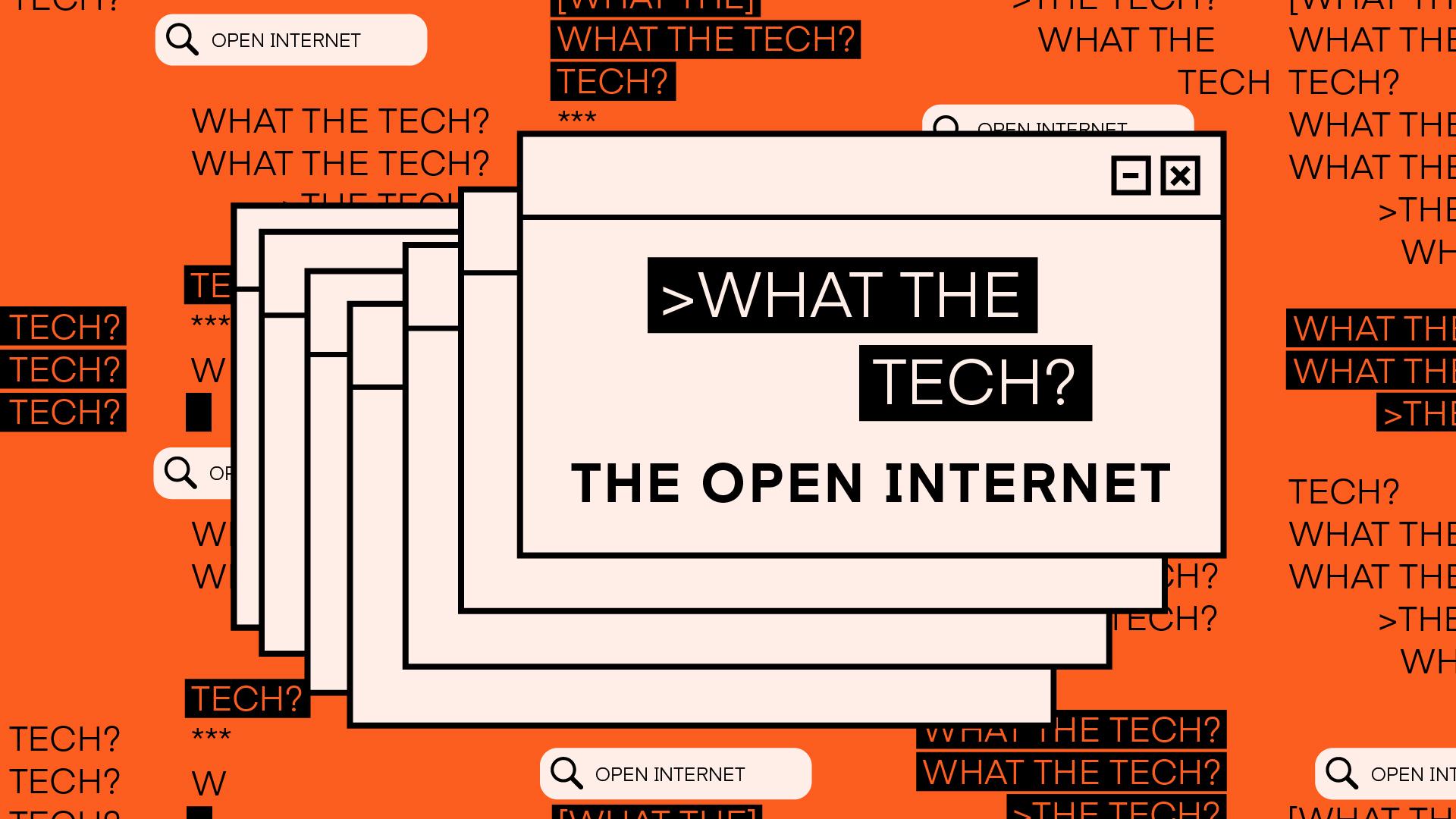What the Tech is the open internet?

When the internet became available to the public in the early 1990s — some of us can still hear the oddly melodic symphony of dial-up — it was typically described as being open, meaning that it was accessible to all individuals and companies, allowing for free expression and innovation. In fact, the Federal Communications Commission of the U.S., which regulates the internet, characterizes it like this:
“The open internet also makes it possible for anyone, anywhere, to easily launch innovative applications and services, revolutionizing the way people communicate, participate, create, and do business — think of email, blogs, voice, and video conferencing, streaming video, and online shopping.”
The concept of “open” here refers to net neutrality, which means that unlike cable TV, the open internet doesn’t allow a service provider to charge carriage fees.
Is this open internet you’re describing the same open internet that marketers are always referencing?
Yes. The modern open internet still hinges on the concept of openness. Let’s start there. According to Merriam-Webster’s dictionary, the word “open” is defined as: “having no enclosing or confining barrier: accessible on all or nearly all sides.” And it gives an example: “cattle grazing on an open range.”
Let’s run with that idea. Imagine cattle grazing on an open range. The cattle are owned by many different farmers — but are still able to roam freely. This represents the open internet, where digital advertising can reach a wide range of audiences across various websites and platforms, without being limited to a closed area. Those open spaces can involve everything from streaming video and news sites to music apps and online shopping.
OK. I’m with you but what do cattle have to do with advertising?
Stay with me. On our metaphorical ranch, the cattle represent the ads, and the range represents the open internet. Just as the cows are free to move around and graze on different parts of the range, ads on the open internet can be displayed on a variety of websites and platforms, reaching diverse audiences, allowing marketers to exercise control over their ad campaigns.
But then, what if some of the bigger ranches start corralling cattle inside a small, controlled area, making it more difficult for those cows to move around and find the best grazing spots? These corrals can be compared to walled gardens — a closed ecosystem where ads are limited to a specific platform or publisher. Walled gardens, such as social media platforms, search engines, and app stores, typically restrict the reach and targeting capabilities of ads and may limit the control that marketers have over their campaigns. In short, marketers are limited to the environments offered within those walls.
So, how can the open internet give marketers control over their campaigns?
Unlike walled gardens, the open internet can allow marketers to have a wider range of inventory sources, more transparency into their campaign metrics, as well as the ability to track conversions across different platforms, thus enabling them to measure the impact of campaigns against their own key performance indicators, or KPIs.
Walled gardens can facilitate an asymmetrical data relationship, in which a marketer plugs in all their most valuable data but most likely has to surrender some control over its performance and their ability to get optimal data insights. Whereas on an open platform, a marketer typically maintains full ownership and portability of their data and can receive symmetric performance data back to better understand what’s working and how their prospects are reacting.
While advertising within a walled garden may offer benefits in terms of targeting precision and ease of use, it can come with potential downsides. In some cases, such a platform is on both sides of the inventory selling process — on the demand side and the sell side— which means they could be incentivized to optimize ads with a bias toward their own content. This would be a conflict of interest. But because of the lack of transparency, a marketer may be none the wiser about how a campaign performed.
Meanwhile, the open internet can allow for more competition between advertisers, leading to a potentially more efficient marketplace. This can result in lower ad costs and a better return on investment.
The open internet can provide marketers with more flexibility when it comes to ad formats and creative options. There are fewer predefined ad formats — more characteristic of walled gardens — which can allow for more creativity and experimentation in ad campaigns. This speaks to the fact that the open internet supports diverse channels, from digital out-of-home (DOOH) to websites to connected TV (CTV).
So, you’re saying the open internet extends beyond just websites?
That’s what makes the open web such a compelling proposition for marketers. It’s where the most premium content lives. Think TV, music, podcasts, games — you name it. Often this content is available for free or subsidized at a low cost, thanks to digital advertising, which in many ways helps power the open internet. That is essentially the value proposition of the open internet, where people can access content in exchange for relevant ads.
The rise in ad-funded streaming services illustrates this point exactly. More and more consumers in every market around the world watch video on streaming platforms, such as Disney+, Max, Tubi, or a multitude of local platforms in different countries. Those platforms are all connected to the open internet. In short, the acceleration of streaming has expanded the grazing land, as it were, of the open internet. And it continues to grow, which means that advertisers can scale up their campaigns in an ever-growing addressable market without being impeded by fences, walls, or corrals.